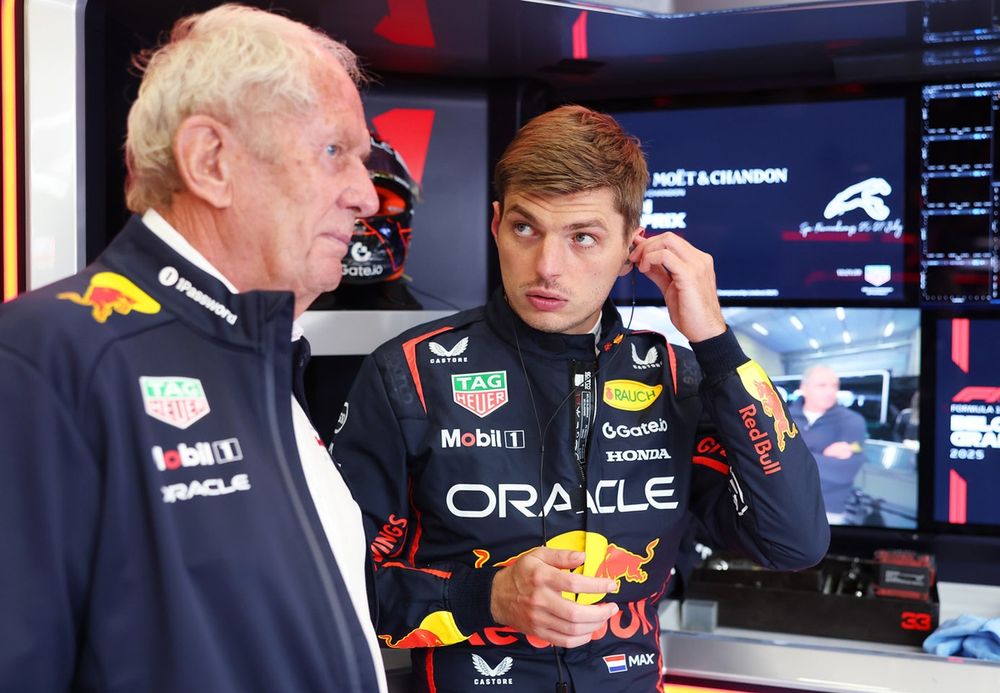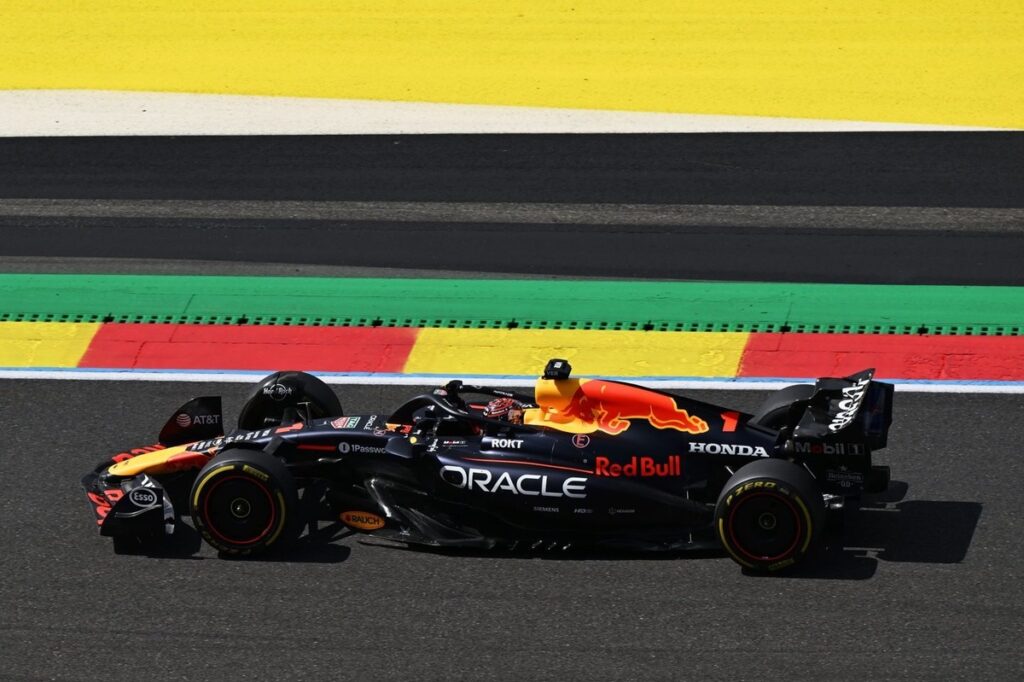The Belgian Grand Prix sprint race was largely affected by the differing downforce levels run by the two Formula 1 teams at the front; Red Bull’s lower-drag approach with Max Verstappen proved to be the more successful set-up.
McLaren, running slightly higher downforce that led to a 0.47-second gap between polesitter Oscar Piastri and Verstappen in qualifying, was at a disadvantage at the start when the field was at its most compressed; this allowed the trimmed-out Verstappen to gather a powerful slipstream on the Kemmel Straight to make a play for the lead.
Once Verstappen got there, it was up to him to retain it. Warding off a Piastri pass into Turn 5, Les Combes, was key to this – although the ‘slippery’ Red Bull RB21 could nullify some of Piastri’s DRS effort on its own. Verstappen also needed to be pitch-perfect with his battery usage to counter Piastri’s own deployment, as the McLaren driver hoped to find a way through. Ultimately, the Dutchman managed the lead expertly to claim the win.
While trimming out for the sprint race seemed to be the right strategy, the grand prix may prove to be slightly different. There are two things to consider: firstly, tyre degradation and, secondly, the onset of rain.
Piastri outlined the difficulty of deciding the next set-up steps in his post-sprint comments. “If it is wet, naturally you want a bit more downforce,” the Australian said, “but if it’s not wet I don’t really want to repeat the sprint race we just had.”
Stick or twist? Let’s present the two cases.
Spa isn’t known for being a circuit that chews up tyres, but the expected borderline nature between a one- and two-stop race at the Belgian circuit may well put some onus on tyre management. For this, a smidgen of extra rear-end downforce will mitigate the effect of sliding – which will exacerbate wear that the tyres experience. Of course, it’s important not to ladle too much wing back into the car’s set-up, simply because any driver would be a sitting duck along the back straight.
Oscar Piastri, McLaren
Photo by: Erik Junius
Teams have both driver-in-loop simulators and virtual race simulation applications where they can tinker with the load settings and determine which offers the best trade-off. In the event that the race is dry, the sim engineers will look at the expected degradation over a stint and determine how the wing level affects the lap time data over a stint – and this will offer the starting point for post-sprint tinkering.
The bigger factor, however, is rain. Wet weather is expected on Sunday, although cannot be totally guaranteed. Either way, rain requires a higher-downforce set-up to alleviate some of the difficulty in driving through low-grip conditions at reduced speeds, and to ensure that the tyres maintain temperature.
Going all-in on a wet set-up will cost considerable time in qualifying, an effect that could snowball if the rain is less than expected on Sunday.
Effectively, teams will have to take a gamble here. The two extremes are to run a low-drag car for the best qualifying result possible, and hope it doesn’t rain, or bet on heavy rain and go all in for Sunday with high-downforce.
But there’s lots of room to explore in between those two settings, and teams simply won’t know the right answer until Sunday afternoon. It’s likely that most will have to dial in a little bit more downforce, if only for tyre management purposes, but it then becomes a question of how much top-end speed teams are willing to sacrifice beyond that.

Max Verstappen, Red Bull Racing, Helmut Marko, Red Bull Racing
Photo by: Red Bull Content Pool
Verstappen stated that Red Bull would certainly need to look at its set-up, having been burned by his low-downforce set-up in the wet conditions at Silverstone three weeks ago – and Red Bull adviser Helmut Marko seemed to confirm this.
“We’ll take another close look at the weather forecast,” Marko told Sky Germany. “Right now, it’s saying an 80% chance of rain and, as we know from Silverstone, you win nothing in the wet with a low-downforce set-up.
“So I think we’ll change to a higher downforce set-up, even if that means we won’t start right at the front. But in the rain, that’ll help in the race. It depends on what set-up the others go with, if someone maybe gambles. But yeah, it could be second or third row [on the grid]. It’ll be interesting.”
Such is the fickle nature of F1 – if someone takes the gamble and gets it right, they’ll be lauded for the next few weeks. But, if they get it wrong, they’ll be asked why they didn’t pick tails in what amounts to a coin-flip decision.
In this article
Be the first to know and subscribe for real-time news email updates on these topics
Read the full article here

